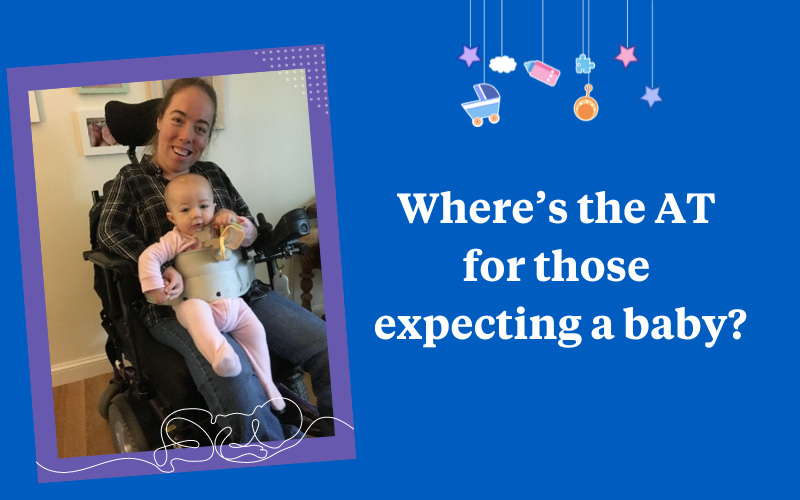Assistive Technology has developed drastically, enabling end users to maximise their independence and achieve a multitude of goals. But what AT solutions are available to those who are new parents and rely on wheeled mobility? Wheelchair users are often left to do their own research and innovate unique strategies, due to lack of information or commercially available AT solutions.
This seems to be quite the opposite problem faced by able bodied parents, where there’s almost too much advice and options for pregnant women and new parents. From pram recommendations to what car seat is the safest, the list of opinions is too vast to helpfully assist you in selecting what may work best in your own unique circumstances.
In my current role I spend a lot of time talking about wheelchairs and the intricacy of wheelchair configurations. I’ve never really thought about how configuration of a chair may need to be changed or adapted if the end user was pregnant, until now. What functional impacts would change to COG, seat to back angle or front and rear to seat floor height have?
How would being pregnant change one’s ability to effectively self-propel a MWC if the space between your torso and thighs is slowly being consumed by a small baby? How would pressure care needs be met if you were no longer able to lean forward onto your lap? How much more difficult would it be to transfer from your chair?
We spend a lot of time considering the seat slope angle in a MWC and ensuring someone has adequate hip flexion, but have we ever considered how to accommodate a seat to back angle for someone whose belly is growing day by day? Would they be more independent transitioning into a PWC for a period of time until the baby arrives? Would the hire of equipment be quickly funded through NDIS?
And what about all the items that are recommended for a nursery?
Most cots/bassinets aren’t designed to be accessible via a wheelchair. In fact, when looking at cots/bassinets and change tables, there doesn’t seem to be any commercial options available that could be easily accessed by a wheelchair user. The sides of cots generally drop down, so access would be blocked if you wanted to wheel under the cot base.
Car seats are another thing that got me thinking. In Europe swivel/rotating car seats are available for public purchase. The benefit of these is that you’re able to turn a car seat to face you while transferring/lifting a baby/child into the car seat. You’re then able to rotate the seat into position (rear or forward facing). This type of swivel child seat would make transferring a child into the car much easier to do from a wheelchair/seated position. Unfortunately, in Australia these rotating car seats do not meet Australian standards and are therefore not available to purchase. They are, however, available to children with special needs (after all commercial options are ruled out), just not parents with disabilities- a pretty big gap if you ask me.
So, what does this mean for parents who are wheelchair users?
Generally, they’re left to their own devices to innovate/hand craft solutions that will best suit their needs.
There are some great forums/websites out there where parents share tips and tricks about what has worked best for them. Some I’ve stumbled across include:
DisABLEd Parents Forum | Facebook
Along with other types of AT I hope this is an area we see great change and improvements in. We’ll be discussing parenting and wheelchair considerations at Melbourne’s upcoming ATSA in May.
You can reach out to our Clinical Education team at Education.NZ@permobil.com to discuss anything AT related.

Rika Millen
Clinical Services Specialist
Permobil APAC
Rika Millen joined Permobil in May 2022, as a Clinical Services Specialist. After graduating from Western Sydney University in 2014, with a Bachelor of Health Science/Master of Occupational Therapy, Rika began working at Prince of Wales Hospital in Sydney. After rotating through a range of clinical areas, Rika moved into the Spinal Injuries Unit, where her passion for seating and assistive technology was ignited. Rika has since worked closely with clients and therapists across Seating Clinic, Spinal Pressure Care Clinic and the Spinal Injuries Unit to devise customised seating solutions to enable clients to reach their goals. Most recently working as the OT Team Leader in the Spinal Injuries Unit, Rika developed a passion for teaching and mentoring clinicians, which she hopes to develop and expand on in her new role at Permobil. Outside of work you’ll find Rika running, hiking, skiing or working on her golf handicap.
